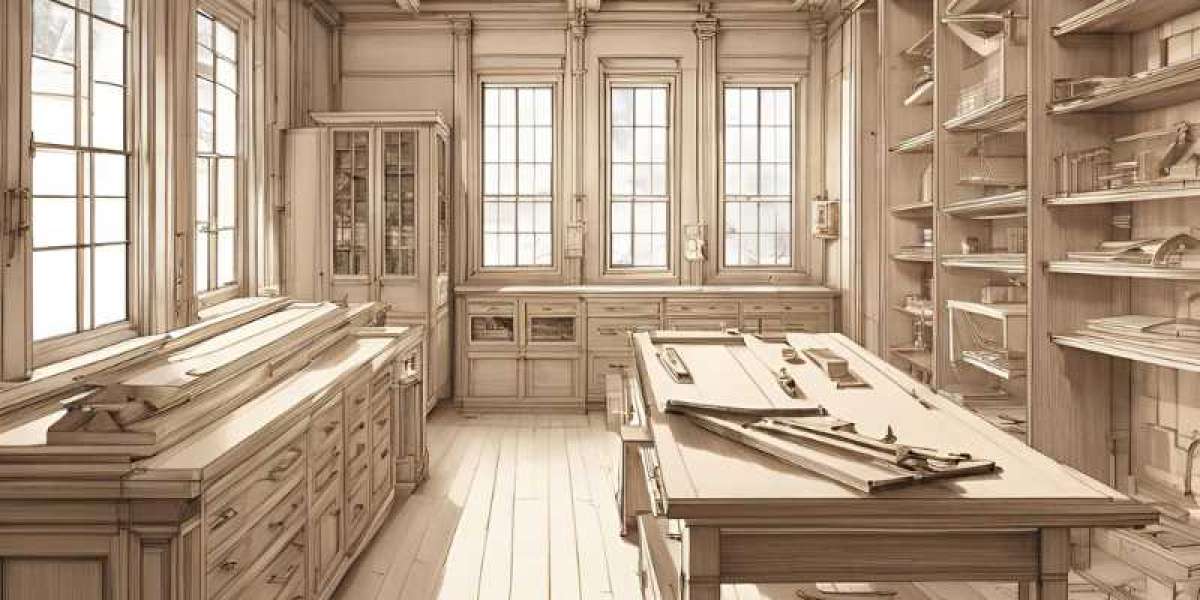Multi-use buildings, where residential, commercial, and recreational spaces coexist, demand an intricate balance of functionality and aesthetic appeal. The complexity of these projects often calls for a meticulous approach to every design and construction detail. Millwork, encompassing custom woodwork elements such as cabinetry, paneling, and fixtures, plays a pivotal role in achieving this balance.
At the heart of successful millwork lies the art and science of millwork shop drawings. These detailed technical documents serve as the bridge between architectural vision and on-site execution. In multi-use buildings, millwork shop drawings must address diverse functional requirements while seamlessly integrating with the overarching design language.
Whether it’s creating durable cabinetry for a retail space, crafting elegant finishes for a luxury apartment, or ensuring ergonomic designs for public areas, these drawings are indispensable in maintaining both form and function.
This blog explores how millwork shop drawings support the design and construction of multi-use buildings, ensuring a harmonious interplay between practicality and visual sophistication. From resolving potential conflicts during pre-construction to enhancing the efficiency of fabrication and installation, we delve into the transformative role these drawings play in such complex projects.
The Role of Millwork Shop Drawings
Millwork shop drawings are an essential part of the construction and design process. These detailed drawings provide a clear, precise representation of custom woodwork, cabinetry, and other architectural elements.
They are created by millwork designers and drafters to ensure that every part of a project is made accurately, meeting the design and functional requirements.
The main role of millwork shop drawings is to bridge the gap between design and construction. They take the architect's or designer's concept and translate it into workable plans for the millworker or contractor.
In providing clear instructions for manufacturing, millwork shop drawings also help with estimating costs and project timelines. They reduce errors and miscommunications by offering a visual guide that all team members can reference.
Whether it’s for custom cabinetry, trim, or decorative woodwork, these drawings ensure that the final product matches the intended design.
Overall, millwork shop drawings play a critical role in ensuring that a project runs smoothly, stays on budget, and meets the client's expectations. They are key tools for maintaining quality control and ensuring that the final millwork installations are precise and flawless.
Unique Challenges in Multi-Use Buildings
Multi-use buildings, which combine residential, commercial, and sometimes even industrial spaces, present a unique set of challenges in design and construction. One of the main difficulties is balancing the needs of different functions within a single structure. For example, the requirements for residential spaces, like privacy and quiet, are very different from the needs of commercial areas, which often require open layouts and accessibility. Ensuring that these spaces complement each other without conflict can be a tricky task.
Another challenge is managing building codes and regulations, which can vary depending on the function of each space. For instance, residential areas have strict fire safety and ventilation requirements, while commercial spaces may need specific structural features to support equipment or customer traffic. Meeting these diverse standards while maintaining the overall design integrity of the building can be a complex process.
Also, soundproofing is a key concern. In multi-use buildings, noise transfer between residential and commercial spaces can be a significant issue. Specialized construction techniques, like extra insulation or sound barriers, are often needed to minimize disruption.
Lastly, logistics and space planning play a crucial role. The building’s layout must allow for easy access to different areas without causing congestion. This requires careful coordination and planning to make sure all spaces are functional and efficient.
These unique challenges highlight the importance of careful design, thoughtful planning, and collaboration between architects, engineers, and contractors to create a successful multi-use building.
Balancing Functionality and Design
Balancing functionality and design is crucial when creating millwork shop drawings, especially for multi-use buildings. A multi-use building serves different purposes, such as residential, commercial, or recreational spaces, which means the design needs to address various needs and ensure the space works well for everyone.
Functionality focuses on how well the space or item performs. For millwork, this includes ensuring cabinetry, shelving, and other built-in elements are durable, accessible, and fit the intended use. For example, in a mixed-use building, storage solutions need to be practical, like adjustable shelves for different items or countertops with the right height for comfort.
On the other hand, the design brings aesthetic appeal and overall style to the space. This is where millwork craftsmanship shines, creating visually pleasing elements that complement the building's architectural style.
In multi-use buildings, this might mean choosing materials, finishes, and colors that match different spaces – from sleek, modern offices to warm, inviting residential units.
To strike the right balance, millwork shop drawings must consider both aspects equally. The design should enhance the functionality of the space, making sure the furniture and built-ins are not only beautiful but also useful.
Good communication between architects, designers, and contractors is key to achieving a functional yet visually appealing result that suits the building’s diverse needs.
Tips for Effective Millwork Shop Drawings
Creating millwork shop drawings requires attention to detail and a clear understanding of design, functionality, and construction processes. Here are a few essential tips to ensure your millwork shop drawings are effective and accurate:
- Start with Accurate Measurements: Always double-check the dimensions before starting the drawing. Accurate measurements are crucial for ensuring that the millwork fits perfectly during installation.
- Use Clear Labeling: Label all parts clearly with specific identifiers like numbers or codes. This helps everyone involved—from designers to builders—understand the project easily and prevents confusion.
- Include Material Specifications: Specify the materials you plan to use in your millwork. This includes the type of wood, finish, and hardware. Clear material specs ensure the final product matches the intended design.
- Detail Every Component: Show every detail of the design, from joints to fasteners. Include sections, elevations, and exploded views to give a complete picture of how the millwork should be constructed.
- Incorporate Tolerances: Allow for slight adjustments in measurements to account for material shrinkage or expansion. Including tolerances helps ensure the millwork fits even with slight changes in the construction environment.
- Coordinate with Other Disciplines: If the millwork interacts with other construction elements like plumbing or electrical systems, make sure to coordinate and avoid conflicts in the drawings.
Following these tips will help create millwork shop drawings that are clear, accurate, and easy to follow, making the construction process smoother and more efficient.
Our Thoughts
Millwork shop drawings are crucial in ensuring the successful design and construction of multi-use buildings, where balancing functionality with design is essential.
These detailed technical documents serve as the blueprint for translating architectural concepts into practical, installable components, ensuring that every element—from cabinetry to paneling—meets both functional and aesthetic requirements.
In complex multi-use spaces, millwork must serve diverse purposes, from durable commercial fixtures to elegant residential finishes, while adhering to building codes and overcoming challenges like soundproofing and efficient space planning.
By following best practices in creating accurate and detailed millwork drawings, designers can bridge the gap between creativity and functionality, ensuring that each space works harmoniously and meets the unique needs of its users.
Ultimately, well-executed millwork shop drawings play a transformative role in creating multi-use buildings that are both practical and visually sophisticated.








